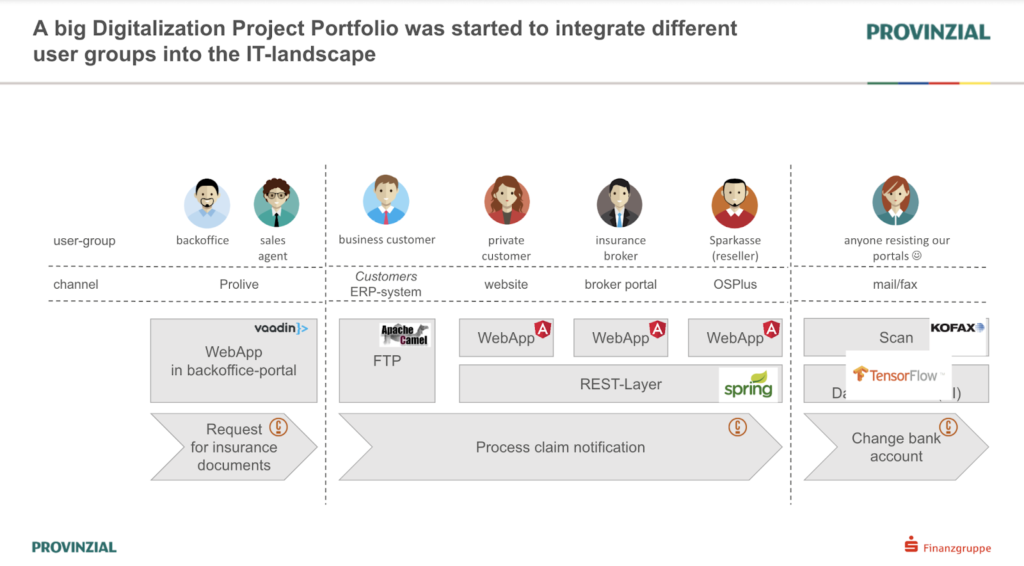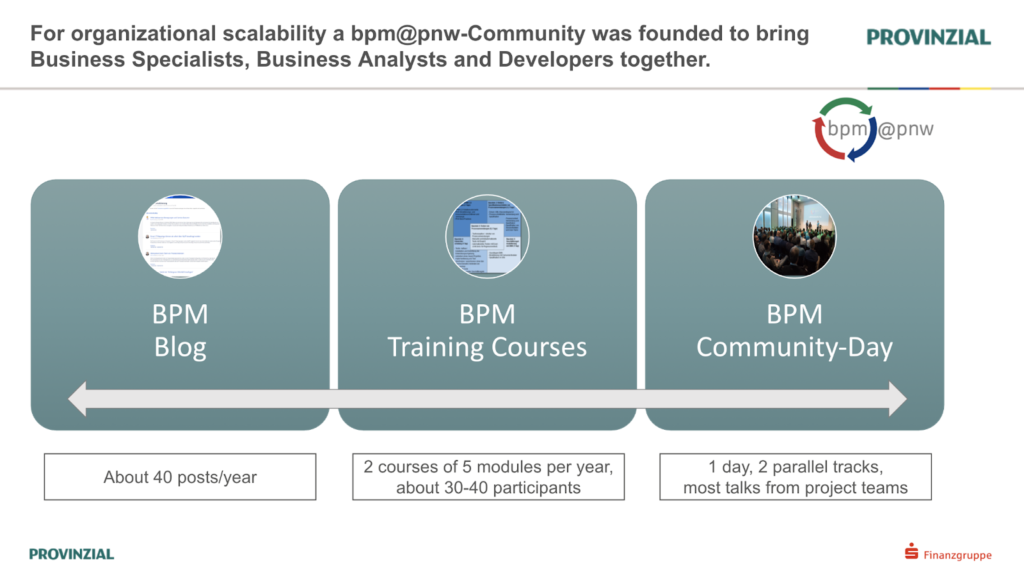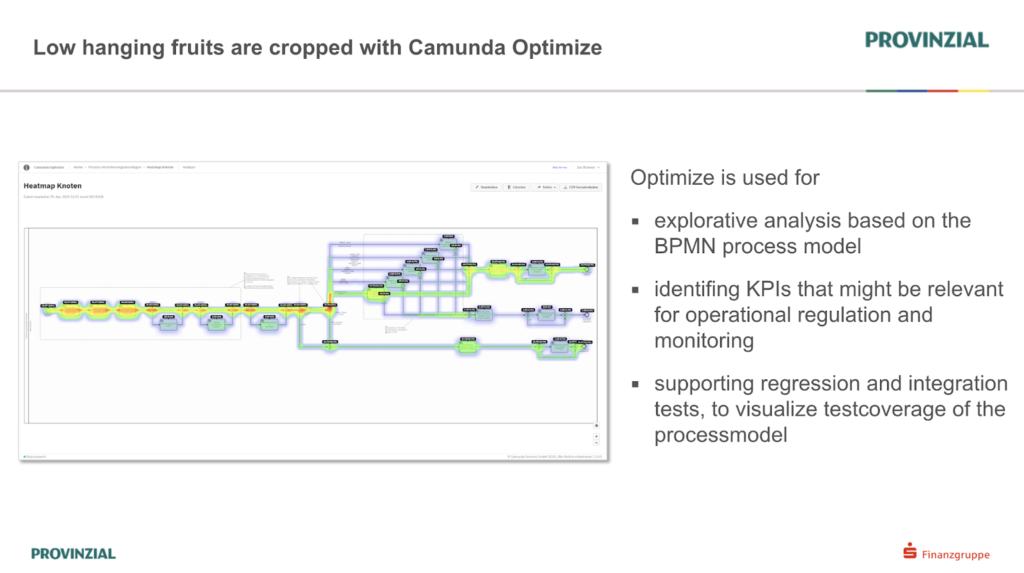Provinzial Nordwest (now part of the Provinzial Holding AG) introduced Camunda Platform in 2014, determined to move from heavily paper-based tasks to an automated, process-orientated way of working. Today more than 100 processes and 250 decisions have been automated, running around ten million process instances each year.
How did one of Germany’s leading insurers, handling insurance premiums in excess of six billion per year, undergo a complete digital transformation in less than six years?
At CamundaCon LIVE 2020.2, Provinzial NordWest’s (PNW) André Wickenhöfer, and Björn Brinkmann, Co-Founder and Chairman of the BBHT Beratungsgesellschaft mbH & Co, shared their journey through technical, organizational and methodological challenges.
Starting Small
In 2013 PNW established a small team to implement a workflow automation platform. Their goal was to intensify process orientation in PNW’s application portfolio and enable the execution of cross-application and (semi)-automated processes.
The pilot project — Request for Insurance Documents, where an existing customer requests several documents, like an additional copy of their policy documentation — was a small, but impactful process that integrates several applications, some of them still running on a COBOL-based mainframe. The first release allowed sales agents to fulfill customer requests for several documents types and systems at the same time.
Using Camunda Platform, PNW created and implemented a straightforward, automated process, cutting down manual tasks and leveraging existing applications.
Aside from the slow nature of claims notification, other questions quickly came into consideration. Do the clerks approach the process in the same way each time? Does each clerk complete it in the same way? How can we measure and improve the process?

The Lighthouse Projects
With the success of the Request for Insurance Documents Process, PNW expanded their vision. With their lighthouse projects, they aimed to integrate and expand their process automation efforts to include their own user task — Siebel — as well as external service providers and business rule management.
They then moved onto a more complicated process — Managing Car Windshield and Glass Insurance Claims — using the experience to fill existing gaps in technology and to build up know-how within the team. By the end, they had established a specification for implementation. For the first time, business stakeholders were able to view the process end-to-end and see ways it could be improved.
Finally a digitization project portfolio was implemented, to integrate different user groups, from customers to the back office, into the same IT landscape to use the same process.

Growing Camunda Adoption Internally

To scale up Camunda Platform within PNW, a BPM community was established in 2016. Consisting of an active BPM Blog, inhouse BPM training and an annual BPM Community day — featuring internal project showcases and external speakers from Camunda.
As the number of automated processes grew, PNW built heterogeneous clusters based on business criteria. This enabled the horizontal scaling needed to cope with the increased requests for process execution and enabled the different development teams to work more autonomously.
The clustering approach, combined with an active community, increased uptake and adoption, as process instances rose to eight million per year.
Establishing Camunda Platform as the company-wide Process Automation Standard
With more and more areas of the business turning to process automation, PNW wanted to keep improving.
Using automated testing, supported by Camunda Platform, they reduced the effort required for process testing. Meanwhile, leveraging Camunda Optimize, PNW enabled business stakeholders to analyze processes — identifying the right KPIs to measure and monitor success and find ways to improve.

These efforts have led to BPMN becoming the business-standard for process modeling at PNW, with high demand for further automation.
In 2020 PNW had more than 90 live processes running in its Camunda Platform Workflow Engine, and 187 in its Camunda Platform Decision Engine, tallying up to more than eight million process instances.
Continuous Improvement
PNW already has a roadmap for the future. In the coming year, they plan to introduce an embedded approach to BPM and DMN for each team, replace the current process modeling tool with Cawemo, and build support for more generic user tasks.
Want to learn more?
Watch Provinzial Nordwest’s CamundaCon LIVE 2020.2 presentation on-demand: Scaling Process Automation at Provinzial NordWest.
And check out Camunda Co-Founder Bernd Ruecker’s blog series: From Project to Program, for more ideas about how to scale Camunda Platform adoption within your company.

